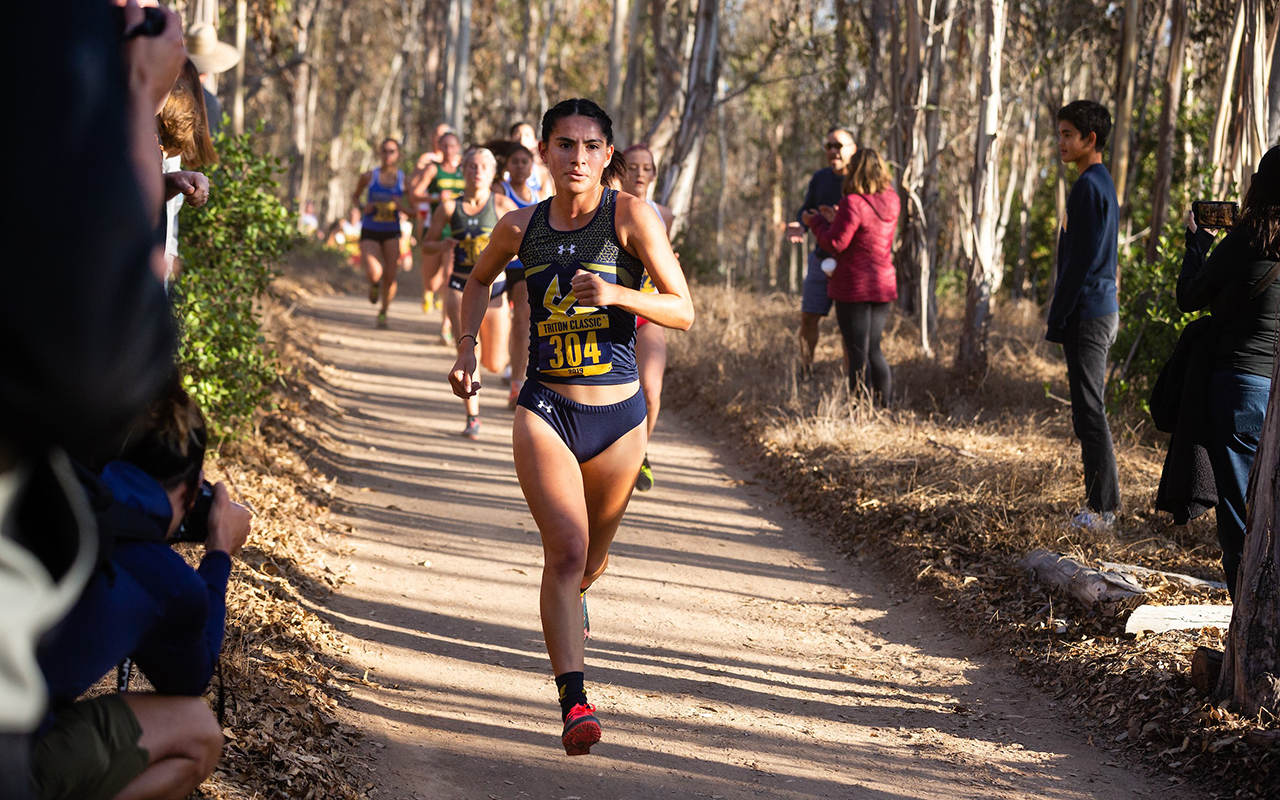
UC San Diego among six U.S. institutions in new Wu Tsai Human Performance Alliance
The Joe and Clara Tsai Foundation makes a $220M commitment to create the Wu Tsai Human Performance Alliance, to advance human well-being through the study of peak performance
By:
- Daniel Kane
Published Date
By:
- Daniel Kane
Share This:
Article Content
The University of California San Diego is one of six universities invited to participate in the Wu Tsai Human Performance Alliance, which publicly launched on July 21, 2021.
The Wu Tsai Human Performance Alliance is a scientific collaboration that aims to transform human health on a global scale through the discovery and translation of the biological principles underlying human performance.
The Alliance was created through a $220M philanthropic investment from the Joe and Clara Tsai Foundation after philanthropists Clara Wu Tsai and Joe Tsai identified an opportunity for broad societal impact by using new insights into the scientific principles underlying athletic performance to improve human fitness and thriving.
“Scientific funding has traditionally been focused on the study of diseases,” said Clara Wu Tsai, founder of the Wu Tsai Human Performance Alliance. “We are taking the opposite approach and studying the human body at its healthiest and most vital, to enable the thriving of all people – from an Olympic Gold Medal-level athlete to a grandfather lacking the mobility to enjoy a full life.”
The Alliance is a public-private partnership comprised of scientists, clinicians, engineers, coaches, athletes and innovators from UC San Diego; as well as Stanford University; Boston Children’s Hospital, a Harvard Medical School Affiliate; University of Kansas; University of Oregon; and the Salk Institute for Biological Studies.
The big-picture motivation of the Alliance extends to empowering all humans to perform at peak physical, intellectual and emotional capacity.
"UC San Diego is one of six world-renowned institutions selected to help launch the Wu Tsai Human Performance Alliance," said UC San Diego Chancellor Pradeep K. Khosla. "We are uniquely equipped to help build upon fundamental, applied and clinical expertise to empower all people to perform at peak physical, intellectual and emotional capacity. UC San Diego brings to the Alliance dynamic, multi-scale modelling expertise as well as the capacity to generate bedrock experimental and clinical data that will drive new ‘living models’ of human performance and recovery. We look forward to continuing our tradition of collaborative research with friends and new partners."
The UC San Diego arm of the Alliance is led by Andrew McCulloch, a professor in the departments of Bioengineering and Medicine at UC San Diego and director of UC San Diego's campus-wide Institute of Engineering in Medicine.
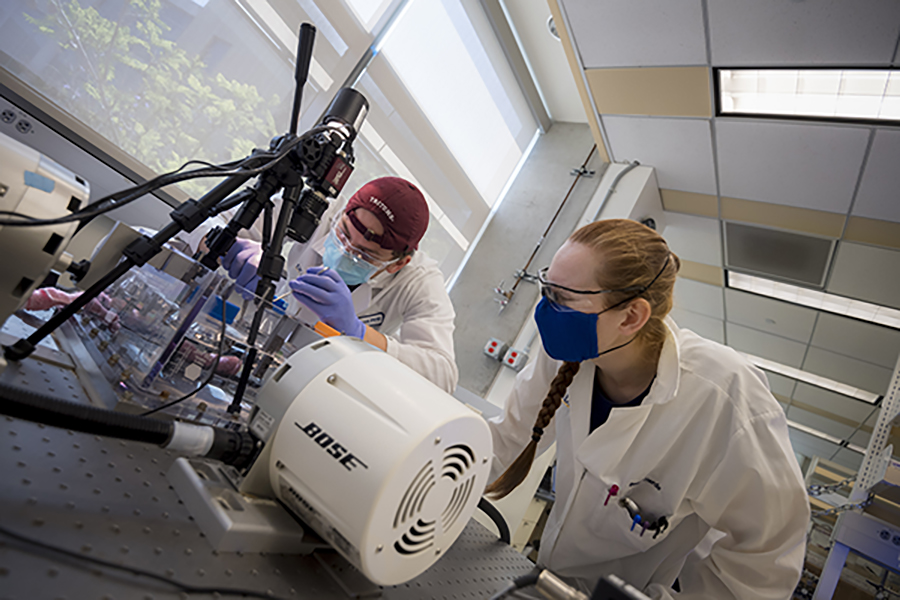
Students conduct research in the laboratory of UC San Diego bioengineering professor Daniela Valdez-Jasso, a faculty investigator of the Wu Tsai Human Performance Alliance at UC San Diego. Credit: Erik Jepsen
UC San Diego activities within the Alliance are organized around two grand challenges: a scientific project, the Multiscale Athlete, led by McCulloch; and an applied project, the Triton Center for Performance and Injury Science, led by Sam Ward, a professor in the departments of Orthopaedic Surgery and Radiology at UC San Diego Health.
Multiscale Athlete
For the Multiscale Athlete "moonshot" project, UC San Diego researchers are creating new generations of computational models of the musculoskeletal system. The new models will go well beyond representing a static picture of the muscles, bones, tendons and ligaments in the human body. The goal, instead, is to bring these mathematical models "to life" by incorporating biological processes so that a person's whole-body athletic model can change and adapt over time to reflect things like injuries or changes in training regimens.
The researchers are using the term "multiscale" because biological research is performed at multiple "scales." From small to large, these biological scales include the genetic, molecular, cellular, tissue, and organ systems scales. Through the Multiscale Athlete project and the Alliance's Digital Athlete project at Stanford University, the UC San Diego researchers aim to weave new information and insights from all these different biological scales into whole-body mathematical models of athletic performance.
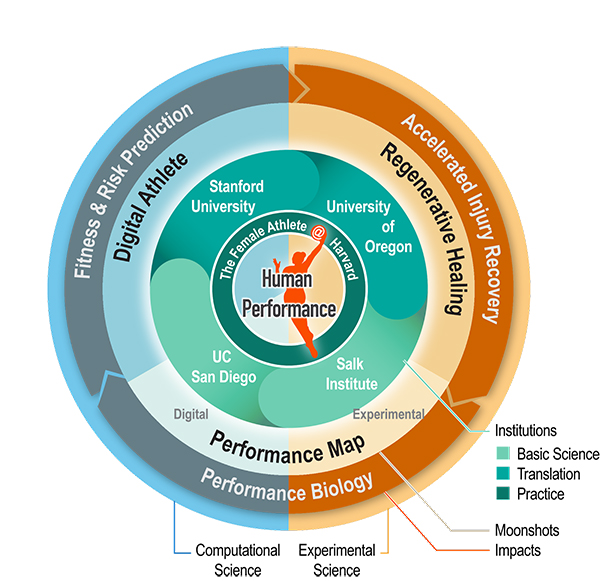
Alliance institutional roles. Credit: I-Hsun Wu, UC San Diego
One of the big goals of these living models is to provide useful insights and predictions that are based on what is actually happening, at multiple scales, in a person's muscles, bones, ligaments and tendons at any given time based on things like a particular exercise regime, a specific diet, an injury, or the details of an individual's sleep patterns.
"Our multiscale modeling teams are critical glue that will connect the other research teams across the Alliance. We are a synergistic layer that will make the Alliance much greater than the sum of the individual parts," said McCulloch. "UC San Diego is a recognized world-leader in multiscale modeling of living systems. It's tremendously exciting to have this opportunity to apply our expertise to the important challenge of understanding the science of human performance and improving human thriving."
Triton Center for Performance and Injury Science
What makes the difference between being a good athlete and a great athlete? Can we predict when a dancer is at risk of injury? What can accelerate an athlete's recovery?
These are the kinds of questions that drive the UC San Diego researchers, and the larger efforts of the Alliance more generally.
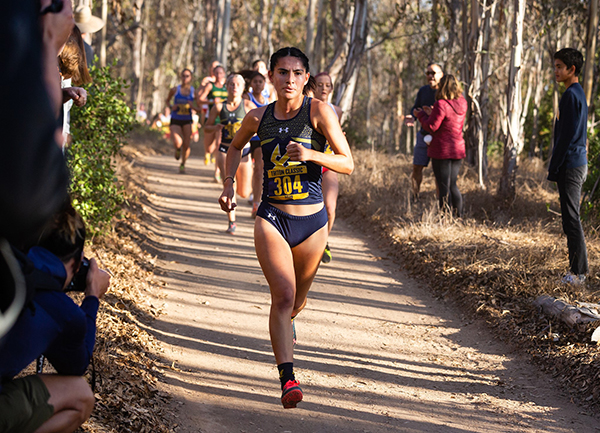
UC San Diego cross country student athlete Zoie Valencia competes in the Triton Classic. Photo by Derrick Tuskan.
"The goal is to understand how the underlying biology behaves in many different human performance contexts," said Ward, who leads the Triton Center for Performance and Injury Science at UC San Diego, which is one of the Innovation Hubs of the Alliance.
"Our concept is to figure out how to fold dynamic models of molecular biology, cell biology and physiology into larger scale models of human movement to aid decision making related to performance, training, and recovery. You can ask questions and do experiments in models that you can't do in humans. But to make the models useful, you need to get great experimental data and rigorous validation to make sure that the models represent what's actually happening in the human body during and after training, performance, and recovery."
With a new "biobank" of tissue samples, ethically collected from athletes as well as laboratory animals, UC San Diego-led teams will generate new biological measurements that will feed into the engineering models in order to accurately represent what's happening in the human body during and after exercise training and injury.
"What sorts of training or rest will be most effective for a baseball pitcher near the end of a long season? How do we precisely pair a therapy to a specific individual with a specific injury? To make these kinds of mappings, you need to understand what's happening biologically in the underlying tissues," said Ward.
It is the interaction between mechanics and biology that the UC San Diego team believes will create breakthroughs in our understanding of peak athletic performance, and peak human performance, more generally.
"If you don't understand what's going on with the underlying biological 'state' of tissues, in the cells themselves, you can't make a prediction about what is going to cause an injury, improve training, or accelerate healing," said Ward.
Putting the pieces together
Through the Multiscale Athlete moonshot project and the Performance and Injury Science innovation hub, the UC San Diego teams are pulling in the same direction.
UC San Diego researchers will use tissue samples from the biobank to run laboratory experiments looking for biological information at multiple scales that offers insights on athletic performance, or injury recovery.
One of the likely scenarios is the following: first, researchers identify genetic, molecular or cellular information in laboratory experiments on tissue samples that point to new ideas about athletic performance or recovery after exercise or after injury. Laboratory experiments will inform and validate the team's computer simulations, which will inspire additional experiments.
The researchers will then be able to apply insights that emerge from this feedback loop between laboratory experiments and computational models to predict what will occur in humans, in terms of anatomy and physiology. Biomarkers in sweat, saliva or blood of human athletes; or information that can be picked up via non-invasive imaging tools, will help the research teams translate their insights to humans.
To dive deeper into the actual experiences of elite athletes, the UC San Diego researchers are also collaborating with UC San Diego Athletics and other groups in the San Diego community.
“In athletics, as in life, we know that injuries occur when demand exceeds capacity. The Wu Tsai Human Performance Alliance provides an excellent opportunity to understand better the success factors driving physical readiness associated with optimal performance in sport and life," said Matt Kritz, PhD, Senior Associate Athletic Director for Athletic Performance and Health at UC San Diego.
Scientific advances and successes that emerge from the Alliance will be freely accessible to everyone—to scientists, to athletes and coaches, to clinicians and health care personnel, to technology designers, and to the general public. The aim is to enable people with all kinds of bodies to thrive at every stage of life.
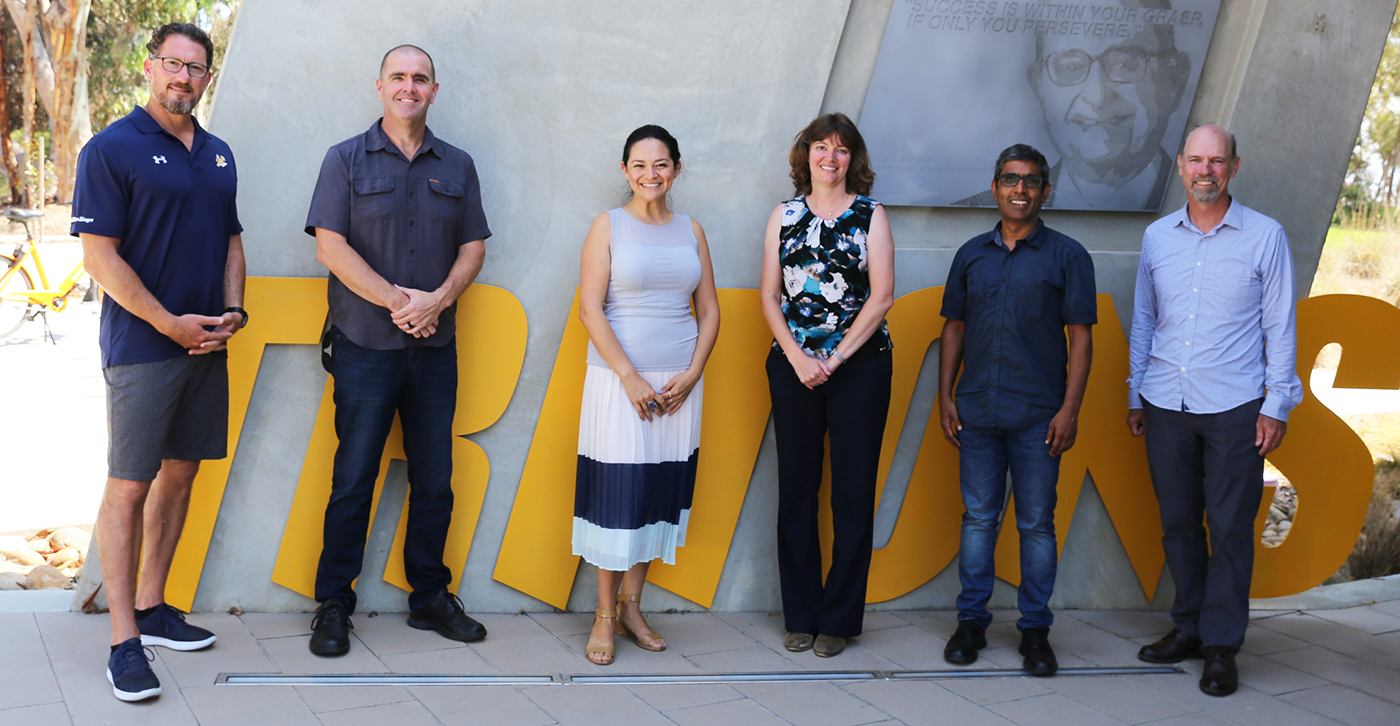
(l-r) Matt Kritz, Sam Ward, Daniela Valdez-Jasso, Kimberly Cooper, Satchidananda Panda and Andrew McCulloch, members of the UC San Diego and Salk Institute arms of the Wu Tsai Human Performance Alliance.
UC San Diego projects and collaborators include:
Multiscale Models of Musculoskeletal Tissue States
Andrew McCulloch, UC San Diego Departments of Bioengineering and Medicine
Systems Biology of Musculoskeletal Tissue States
Padmini Rangamani, UC San Diego Department of Mechanical and Aerospace Engineering
Pradipta Ghosh, UC San Diego School of Medicine
Mechanobiology of Cell and Matrix interactions
Adam Engler, UC San Diego Department of Bioengineering
Stephanie Fraley, UC San Diego Department of Bioengineering
Biomechanics of Musculoskeletal Tissues
Daniela Valdez-Jasso, UC San Diego Department of Bioengineering
Andrew McCulloch, UC San Diego Department of Bioengineering
Performance Evolution
Kimberly Cooper, UC San Diego Division of Biological Sciences
Triton Center for Performance and Injury Science
Sam Ward, UC San Diego Health Sciences
Robert Sah, UC San Diego Department of Bioengineering
UC San Diego Athletics
Rady Children's Hospital
Share This:
You May Also Like
Stay in the Know
Keep up with all the latest from UC San Diego. Subscribe to the newsletter today.
